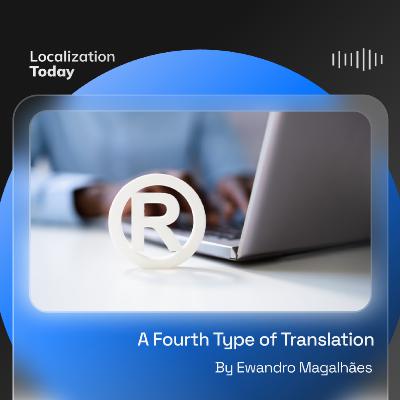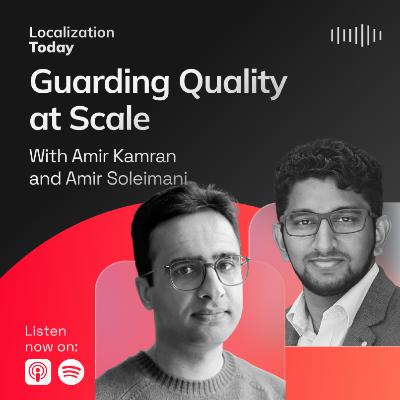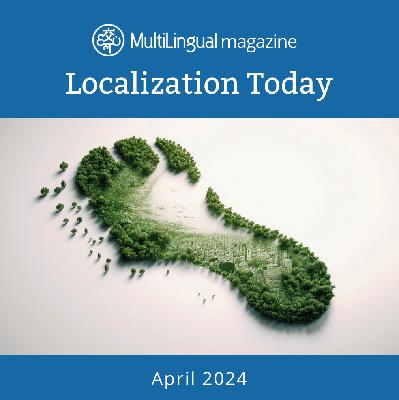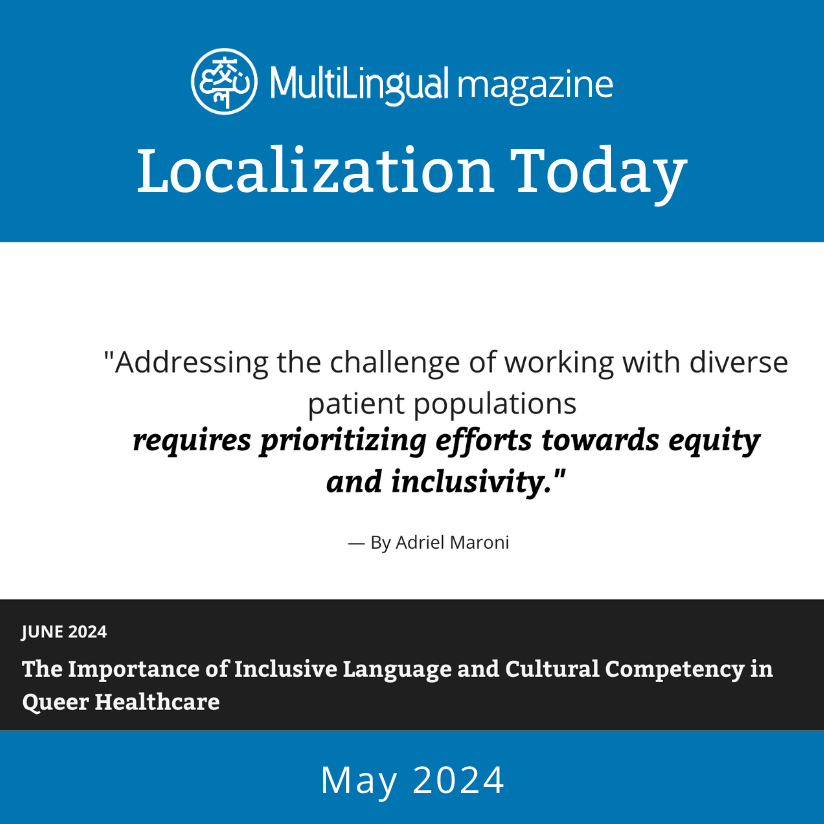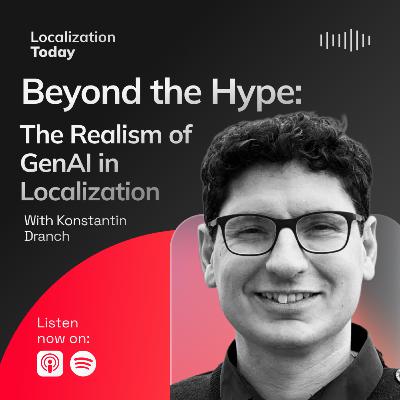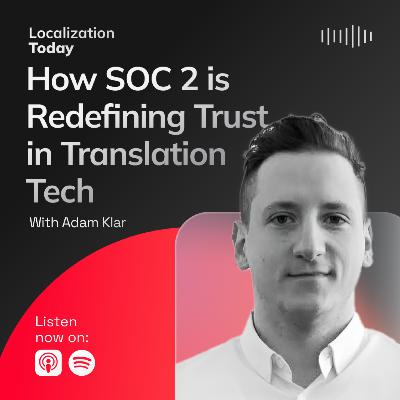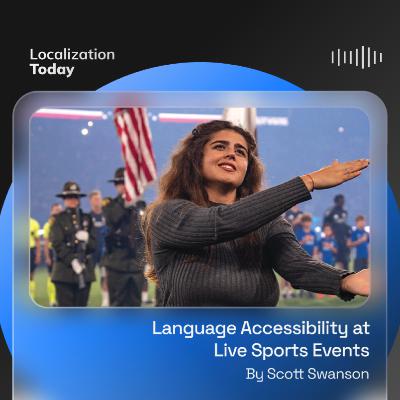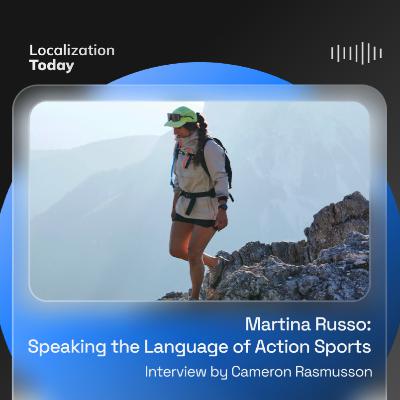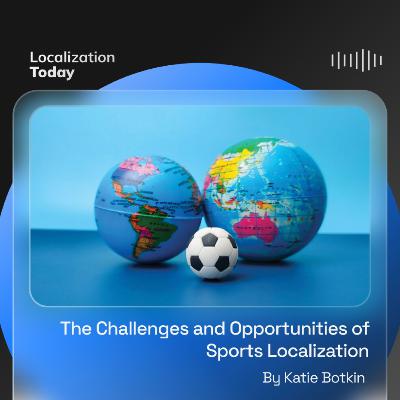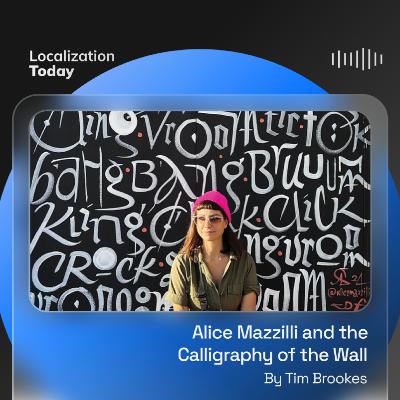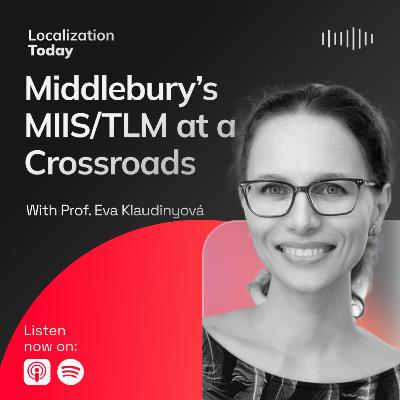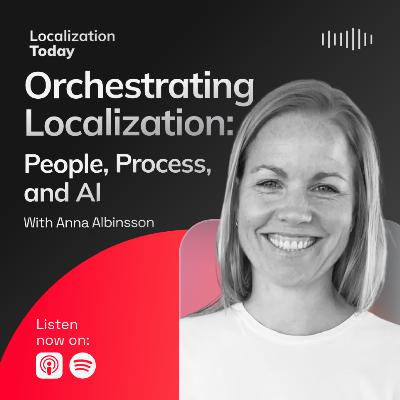Discover Localization Today
Localization Today

681 Episodes
Reverse
By Ewandro Magalhães
Prompted by his own experience of co-authoring an article with AI, the author explores a “fourth type of translation” — that between human and machine. He considers the protocols for AI collaboration: At what point does assistance cross into ghostwriting? When does augmentation become abdication?
Amir Kamran and Amir Soleimani from Taus unpack Quality Estimation (QE) as the missing link between machine translation at scale and human-quality outcomes. They frame QE as an automated “second opinion” that flags what can ship, what needs a quick AI touch-up, and what should go to a linguist—shifting human effort to the tricky, high-risk bits.
In this conversation, we explore where this matters most (high-volume content, real-time chat, regulated use cases), how QE reshapes workflows after MT, and why language access still demands human oversight in sensitive domains. They close with what’s next: lighter, task-focused models, more agent-style automation, and a broader definition of quality that favors fitness-for-purpose over perfection.
Are you looking to integrate business success with positive social and environmental impact? Laura Gori urges language service providers to consider the Benefit Corporation model, a framework that helped her business, Way2Global, reach its sustainability goals without sacrificing growth.
By Adriel Maroni
How can language professionals help improve healthcare for LGBTQ+ individuals? Adriel Maroni argues that using gender-neutral terminology, allowing for self-identification, and exercising open-mindedness goes a long way towards fostering inclusive and culturally competent care.
This December, one of the industry's most technical events returns. Konstantin Dranch, founder of CustomMT, gives us an inside look at the GenAI in Localization online conference. We explore its “nerdy” and “realist” approach, which substitutes marketing hype for practical, hands-on workshops. He reveals the 2025 program's focus: moving beyond potential to showcase 12 real, operationalized GenAI systems built by localization teams, and how localization leaders must now act as “diplomats” to “search and destroy rogue initiatives.”
In this episode, we explore how SOC 2 is actively redefining what "trust" means in translation technology. Adam Klar, CISO at memoQ, provides a candid look at the "overwhelming" journey to achieving Type 1 certification. He breaks down the critical difference between a Type 1 "snapshot" and a Type 2 "period-in-time" audit, explains why a GRC platform is essential for success, and makes the case for why this standard is the new, non-negotiable baseline for enterprise-grade localization.
The language industry is evolving to Language Intelligence and n this episode, Bruno Herrmann, Vice Chairman of LT Innovate, to unpack this critical concept. He explains how AI, language data, and human expertise must converge to create real business value.
Explore how new roles are emerging for language professionals in data management and AI training, and get an exclusive preview of the Language Intelligence 2025 event in Vienna, a conference focused 100% on practical use cases from diverse industries.
How partnerships between language companies and sports teams enable inclusivity
By Scott Swanson
For sports fans who are Deaf or who speak a language other than the primary one used in the stadium, the sensory richness of a live game is diminished without dedicated support. The author challenges sports organizations to embrace comprehensive language services in order to truly connect with their entire fan base.
By Claudio Fantinuoli
The author argues that future AI interpreting systems will learn from not only human-generated examples, but also their own experience interacting with environments, generating data, and discovering solutions beyond existing human knowledge.
By Johan Botha
African language service providers don’t need to catch up — they can leap ahead. The author argues that Africa’s specialized language models, culture of collaborative entrepreneurship, and emphasis on human-centric design can launch the continent to the forefront of the localization industry.
Interview by Cameron Rasmusson
As an outdoor sports enthusiast and lover of languages, Martina Russo eventually combined her two passions into a specialized localization agency for action sports brands. She and her team strive to ensure their clients speak authentic lingo regardless of regional differences; after all, when lives can depend on choosing the right gear and following accurate instructions, quality counts.
Challenges and innovative approaches
By Martina Russo
The quickly evolving nature of action sports language poses unique challenges for translation professionals who must capture not only literal meaning but also cultural context and authentic community voice — all while upholding the technical precision that ensures clarity and safety. The author, who is profiled in this issue, details innovative translation and localization strategies that can also be applied to other industries with quickly evolving vocabularies.
By Katie Botkin
Despite some unique challenges, sports localization offers many intriguing possibilities for language companies going forward, particularly in emerging sports. This article provides an overview of some of the most exciting opportunities in today’s sports localization landscape.
By Chandan Kumar
In a multilingual nation like India, language can function as both a celebratory performance of identity and a mechanism for exclusion. The author highlights intensifying linguistic conflicts across India in the age of mass media and argues that linguistic politics must be conducted with care, sensitivity, and an awareness of India’s deep pluralism.
By Tim Brookes
Alice Mazzilli practices a graffiti-like visual art form called jamigraphy — or jamming with calligraphy — that combines writing, painting, music, and movement. This article tells her story while exploring the value and beauty of imperfect handwriting.
"World Ready" is the new name and mission of GALA's annual conference. The Executive Director, Allison Ferch, explains this significant conceptual change in this episode.We discuss why the industry must move beyond AI hype to manage new complexities, and how the new “Ready” framework (Tech, Market, People, Risk) provides a path forward. Get an inside look at the GALA World Ready 2026 conference in Berlin and find out why the ultimate goal is to provide “direction, hope, and inspiration.”
What happens to the language industry’s talent pipeline if MIIS’s Translation & Localization Management program shuts down? In this episode of Localization Today, we speak with Prof. Eva Klaudinyová—Program Chair of TLM at the Middlebury Institute of International Studies—about the program’s legacy, STEM-driven curriculum, and why its alumni are so job-ready across Big Tech, LSPs, and public institutions. We unpack the enrollment and policy headwinds facing graduate education, how MIIS has kept pace with industry through constant curriculum updates, and what a three-to-five-year talent gap could look like.
Eva also outlines parallel efforts to keep the program alive—either by preserving MIIS or relocating TLM to a new academic home—and shares concrete ways the community can help, from statements of support to exploratory conversations with potential host institutions.
What does it take to ship products that feel local everywhere? In this Localization Today episode, host Eddie Arrieta talks with Anna Albinson, CEO of Gridly, about the “Localization Triathlon”: AI for speed and scale, automation for flow and reliability, and humans for creativity and cultural fit.
We dig into connected workflows (one source of truth instead of silos), the rise of the orchestrator role, and lessons Gridly carried from gaming into SaaS, fintech, and edtech.
In this episode, we sit down with Vassilis Chamalidis, CEO of Alpha CRC, a company at the forefront of combining deep tech with human collaboration. He shares a powerful vision for the “augmented human,” a professional equipped with an ecosystem of AI tools to work faster, smarter, and more consistently.
We explore where to embrace automation and where human expertise, cultural nuance, and true creativity must always lead. This is an essential guide for anyone looking to build a sustainable and successful future in the language industry.
By Iryna Modlinska
When expanding into new markets, brands that introduce centralized control over multilingual content grow with greater consistency and confidence. This article presents an actionable plan for developing a localization framework that gives brands direct control over messaging, enabling them to communicate technical and design differentiation that justifies premium pricing globally.


